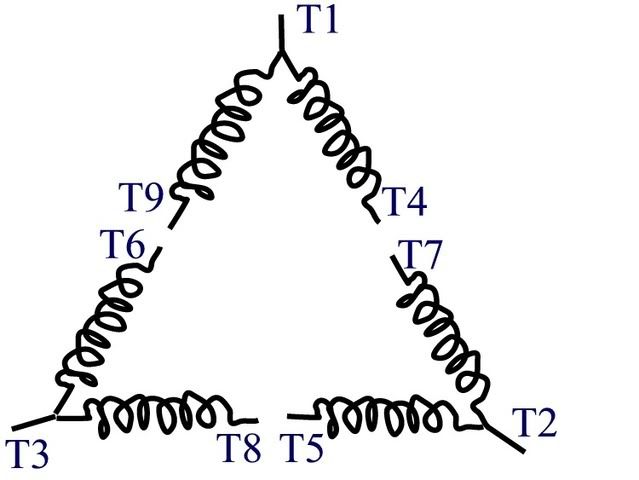I have been reading informatino regarding delta vs wye motor configurations but am still a little foggy on the subject. I have noticed that most of the motors in our plant are wired for a 3-wire delta configuration. If I understand correctly, a 3-wire connection is not one that can be changed, and it is what it is wheather its delta or wye.
This brings me to the 6-wire motors which can be changed between delta and wye. I understand that a delta wired motor will have the L-L line voltage across the stator windings, and a wye configured motor will have (L-L)/1.73V across the stator windings. I've seen a high voltage and low voltage referenced when using delta / wye connectiosn but am unsure what these voltages refer to? If I have a 480V L-L system voltage, would this be a high voltage or low voltage when refering it to a 480V 6-wire motor? What is meant by these voltages.
Aside from a wye-start / delta-run soft starting application what are some other applications where a motor would be wired for a wye configuration for starting and running? What happens if you wire a motor configured for one type the other way?
I would appreciate any info or resources regarding this topic.
This brings me to the 6-wire motors which can be changed between delta and wye. I understand that a delta wired motor will have the L-L line voltage across the stator windings, and a wye configured motor will have (L-L)/1.73V across the stator windings. I've seen a high voltage and low voltage referenced when using delta / wye connectiosn but am unsure what these voltages refer to? If I have a 480V L-L system voltage, would this be a high voltage or low voltage when refering it to a 480V 6-wire motor? What is meant by these voltages.
Aside from a wye-start / delta-run soft starting application what are some other applications where a motor would be wired for a wye configuration for starting and running? What happens if you wire a motor configured for one type the other way?
I would appreciate any info or resources regarding this topic.

